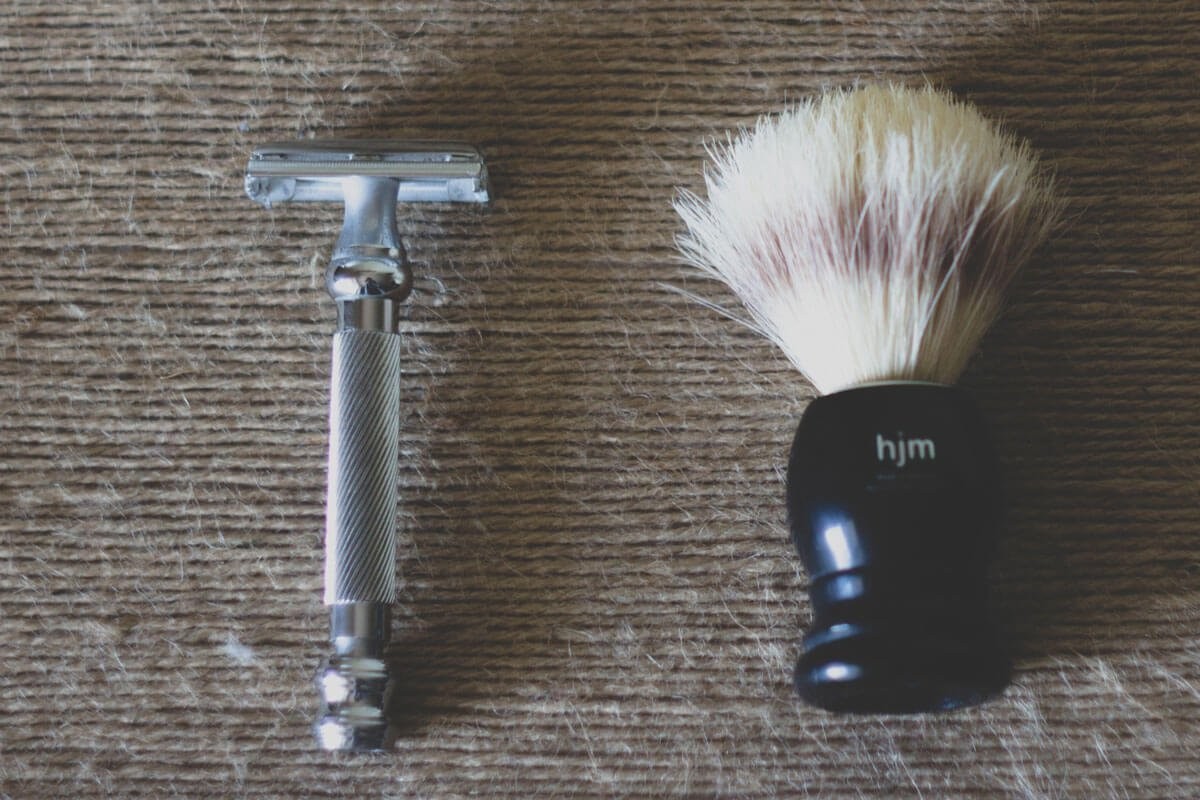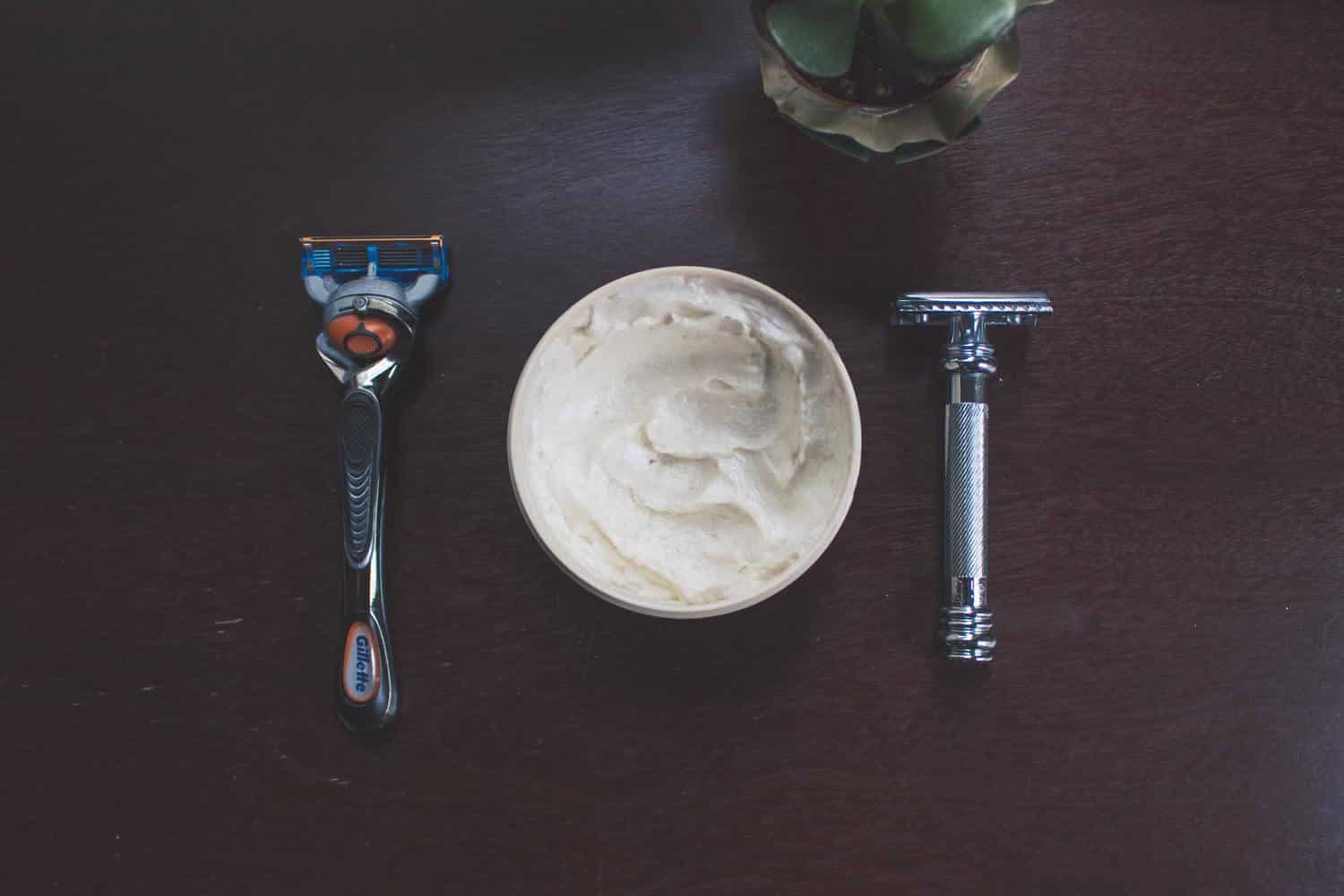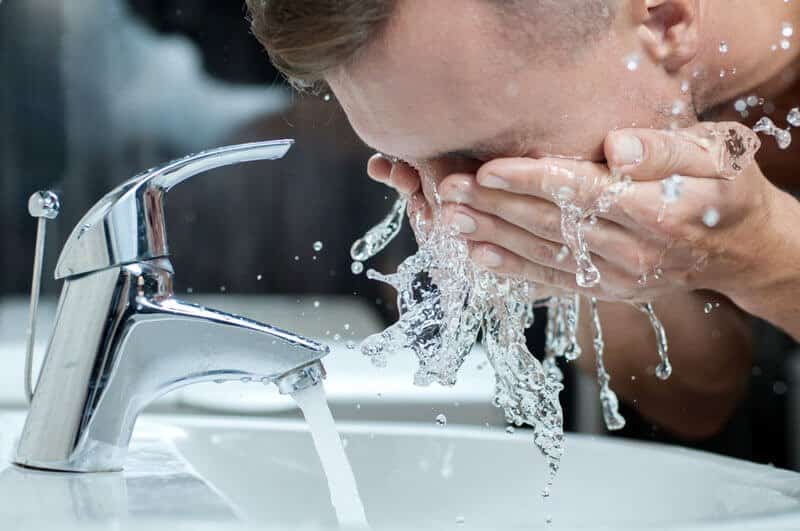
Trying to get a firm grasp on what is aftershave? Don’t worry you and thousands of other men often get confused with this grooming product all the time.
I was once there myself too.
In fact:
All this talk about astringents, alcohol vs witch hazel, etc just made my eyes gloss over and stare blank into the screen.
Don’t worry about it though! With this guide you WILL know what is aftershave and all of the derived benefits that it carries.
You’ll also discover the essential core ingredients that you need to know when picking out your next bottle.
Just remember this, if you have been shaving for years, the right aftershave can go either: really good OR really bad.
To make aftershave go really good it comes down to the ingredients in the solution itself.
Before I deep dive into the ingredients, lets get on the same page of the core purpose of aftershave:
What is Aftershave’s Main Purpose?
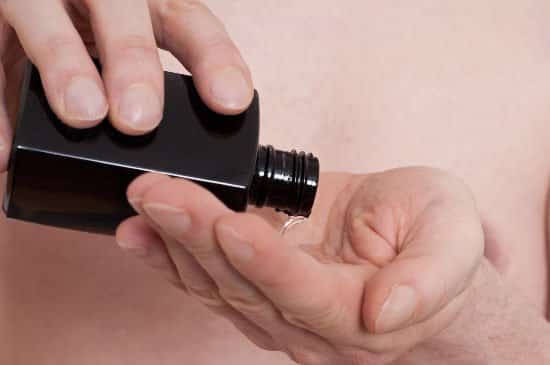
Many people get the purpose of aftershave confused – and rightfully so!
Many guys tend to think that aftershave is strictly for aromatic purposes.
However, that’s only partially true – but not the reason why you buy a bottle of aftershave.
If you were looking for just a good scent, cheap colognes can fill that void.
I’ll go into the difference in just a bit below but I want you to do me a favor…
Think about this for a moment:
When you need to shave, you should do it right after you hop out of the shower – but why?
Well for two reasons, first off, your hair follicles just absorbed quite a bit of water and therefore will be much thicker.
Being that the beard stubble is a bit thicker, your pores need to naturally expand to account for the thickness in the hair follicle.
First off you slop on a decent pre shave oil and shaving cream.
As you look in the mirror at your lathered up face you go ahead and take a swipe across it with any of the best razors out there.
In fact you take a couple passes with the razor in order to make sure your entire face is incredibly smooth.
Lastly you get a handful of water and rinse off any remaining residue left from the shaving cream.
Ok, so nothing out of the ordinary right?
Let’s step back for a minute and remember this:
You hopped out of the shower, passed a razor across your face a few times, and rinsed.
Well that razor likely has been used a couple of times before this last shave. In addition, since you were just shaving after a shower, your pores were much larger.
Mid-life cycle bacteria filled razor blade meet your new home: wide open pores.
What happens when bacteria meets open pores?
Skin irritation + the possibility of general skin infection, acne, etc.
I know that sounds incredibly gross but hear me out:
Good and bad bacteria can be found everywhere!
If you have been shaving for years and haven’t used aftershave, then you clearly know that nothing horrible is going to happen by not applying it.
However, let’s face it, if you get acne or have skin irritation after shaving, aftershave may be able to help you out quite a bit!
The general purpose of aftershave is two parts:
First: completely clear out your pores of any bacteria that was hanging around from the razor blade shaving cream.
Second: seal up your pores to prevent any additional dirt or bacteria from coming in (tip: the ingredient that does this in aftershave is normally referred to as an astringent).
If you suffer from acne, or perhaps have flareups of acne after shaving, you may want to give an aftershave like this a shot as it uses witch hazel as the base ingredient and aloe vera as a secondary ingredient.
Which leads us to our next section:
Breaking Down the Types of Aftershaves and Its Ingredients
Aftershave can be split into two families, witch hazel and alcohol.
When deciding on an aftershave, understanding the differences and benefits between the two ingredients is important.
For All Natural Aftershave Go With Witch Hazel
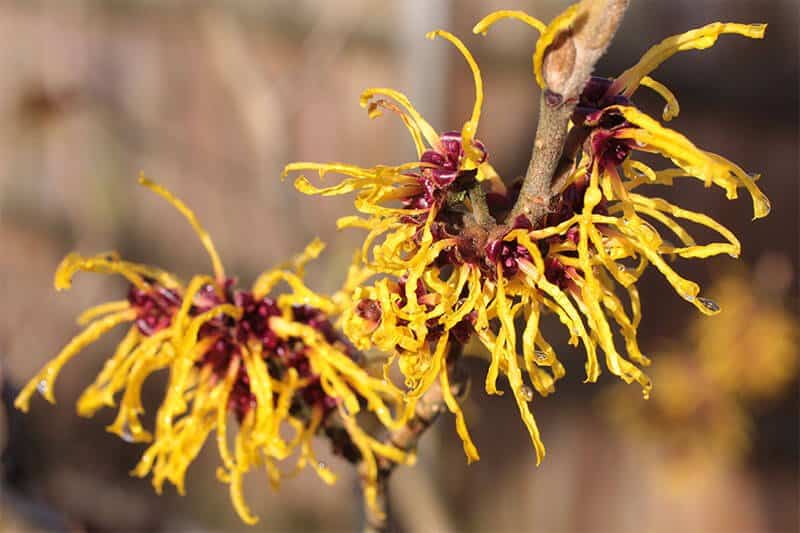
Witch hazel is a terrific ingredient to have as a base when it comes to aftershave for several reasons.
It’s a natural astringent for your pores:
Witch hazel is a main ingredient in several types of beauty products across both sexes. In terms of aftershave, the biggest advantage that it brings to the fluid is its ability to constrict pores – unlike alcohol (its cheap counterpart) – witch hazel is a natural astringent that doesn’t dry out your skin.
No Unnecessary Scratching With Witch Hazel
Not only is witch hazel an astringent, but it also is a terrific anti-inflammatory remedy that will soothe any irritable skin. Witch hazel is commonly used in other products to treat bug bites, general rashes, etc. So if you have irritable skin after shaving, witch hazel can really help you out.
Get Rid of The Aftershave Sting
Some guys are masochists – and I have no idea why.
Guys who have used alcohol based aftershaves expect a sting when they splash on their aftershave.
I don’t know about you, but to me this doesn’t make any sense. If you had me choose between a product that doesn’t dry out my skin and doesn’t sting when applied to my skin compared to another that does the exact opposite – I’m going with the first one.
Get this:
Witch hazel (although the name sounds not at all appealing) completely soothes your skin. There is no ‘sting’ when you use an aftershave that has it as its main ingredient.
So if you’re using a aftershave for the first time that isn’t alcohol based you might have the same feelings as this guy:

It is working and it doesn’t sting.
It’s Like Listerine (well kinda) For Your Face
Minus the horrible burn of course!
So we touched on that witch hazel is a natural astringent, it soothes your skin, and it doesn’t sting when applied. This leaves us with one more thought:
Is witch hazel effective in cleaning?
Yes!
In fact its extraordinarily effective – witch hazel is great at flushing out bacteria and even those that cause acne.
So not only does it keep your face extremely clean, if you have acne its effective at combating that as well.
When It Comes to Aftershave Stay Away From Alcohol
So the aftershave of yesteryear used to contain alcohol as a way of clearing out any excess bacteria after shaving.
However, those days are long gone and using such an ingredient is not a good thing.
The reason for this is that when alcohol is used in aftershave, it will tighten the skin and then also dry it out considerably.
With such a dry skin you will actually start to experience flaking and the skin naturally peeling away.
That’s not to say that much of the aftershave on the shelf today doesn’t contain trace amounts of alcohol, however, you will want to make sure you stick to the alcohol free based ones.
Tea Tree Essential Oil Is a Great Cleanser
While the use of alcohol used to prevalent is the old fashioned aftershave and quickly realized the downfalls that it brings, natural ingredients like witch hazel described above may often be paired with tea tree oil.
As a natural ingredient, tea tree oil has many great benefits. Tea tree is naturally an antiseptic that will flush out the pores of a fresh shaved face to prevent any sort of skin infections.
Couple tea tree with witch hazel (a natural astringent) and you will have a great one two punch as an aftershave.
Aloe Vera as an Extra Layer of Soothing Relief
Just like those dog days of summer where you miss a spot when putting on sunscreen and end up going to the local convenience store to pick up this stuff, aloe vera provides incredible soothing relief when applied to irritated skin.
History of Aftershave and Why It Was Used
Aftershave itself used to be extraordinarily popular in the early 1900s. Back then barbershops and men alike use to use the liquid to splash on their face after shaving (thus the name aftershave).
The liquid that was used back then however, has changed quite a bit. Before the the contents of the aftershave used to have a very high concentration of alcohol (north of 70%).
While we didn’t understand the natural benefits of witch hazel like we do today – alcohol was largely used.
The purpose for this high concentration was to fend off bacteria that would be able to seep into the wide open pores after shaving.
The defacto standard back in the day was the single edge razor (non shavette that was later introduced by Dovo). Therefore at barbershops, they would be forced to use the same blade customer after customer.
The Different Types of Aftershave
After going over the ingredients of aftershave above, you are going to see two primary types of aftershaves – splash, lotion, gel, or balm.
Which one are you going to start with?
Generally speaking the aftershave you want to go with will be the one that matches your skin complexion.
Normal Skin
If you have normal you will want to stick to the splash variant of aftershave. You have the most flexibility in order to also try out lotions or gels as well. However, remember as we mentioned earlier, you will want to stick to the non-alcohol based aftershaves. Therefore something like this that contains witch hazel and aloe vera could be a great starter aftershave.
Oily Skin
With oily skin, you still have the ability to try out splashes, lotions and gels. Personally I would recommend this combo of a splash followed up by a moisturizer.
Dry Skin
If you live in a cold or really dry climate, balms are the best bet to start out with. While lotion and gels can also be good starters. A great aftershave balm that is alcohol free can save your face from a ton of pain during those dry winter months or hot desert days.
Sensitive Skin
If you have sensitive skin make sure you don’t get a product that is unscented and alcohol free. I would recommend trying out this one. This way you will likely not experience any burning sensation when applying it.
For a full comprehensive review of the top aftershave balms, check out our in-depth guide.
Applying Aftershave Is as Simple as 1, 2, 3
Just like its beard oil brethren, aftershave is the exact same process.
To start out you want to get about a dime sized amount of aftershave in the palm of your hand.
Mix it together within your hands and then spread it across your face evenly.
Here is a video tutorial that the folks at Howcast put together:
Let’s Wrap it Up
Back to our initial question – What is aftershave?
As we discovered – it’s an essential part of the grooming process that can really help your skin in a tremendous amount of ways – especially if you go with the ones with the correct ingredients.
Remember, the cheaper ones often contain alcohol and will completely dry out your skin.
If this is the first one ever, I recommend that you go with a witch hazel + aloe mixture.
This way you get no burning sensation and an incredibly smooth skin to follow.



